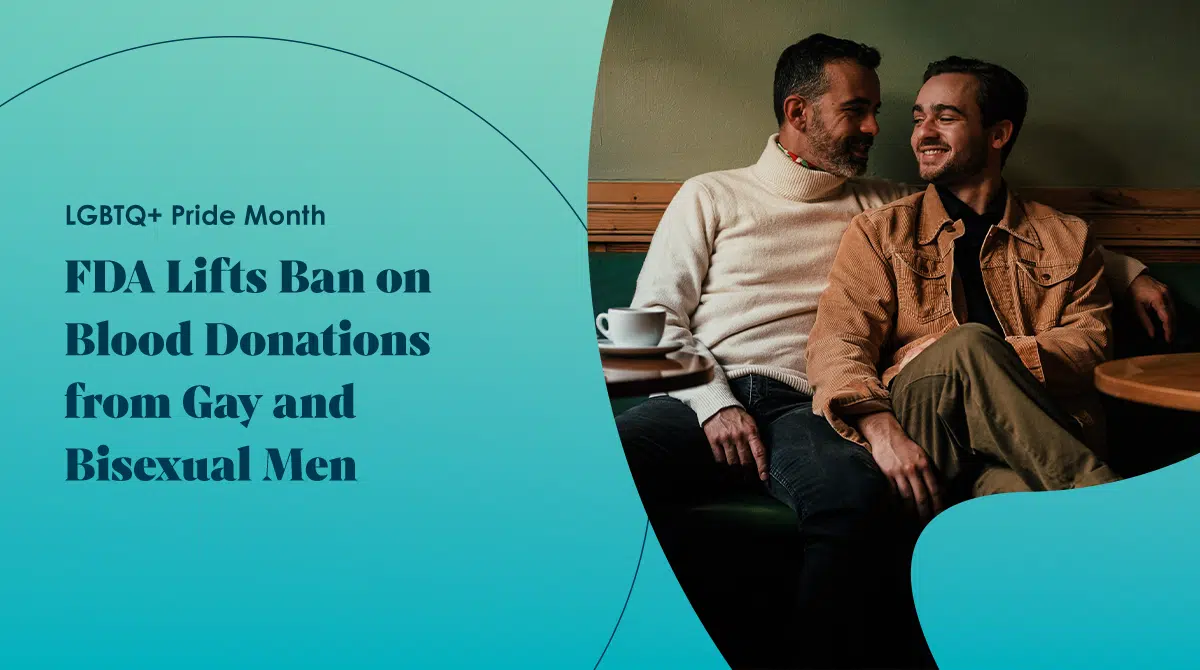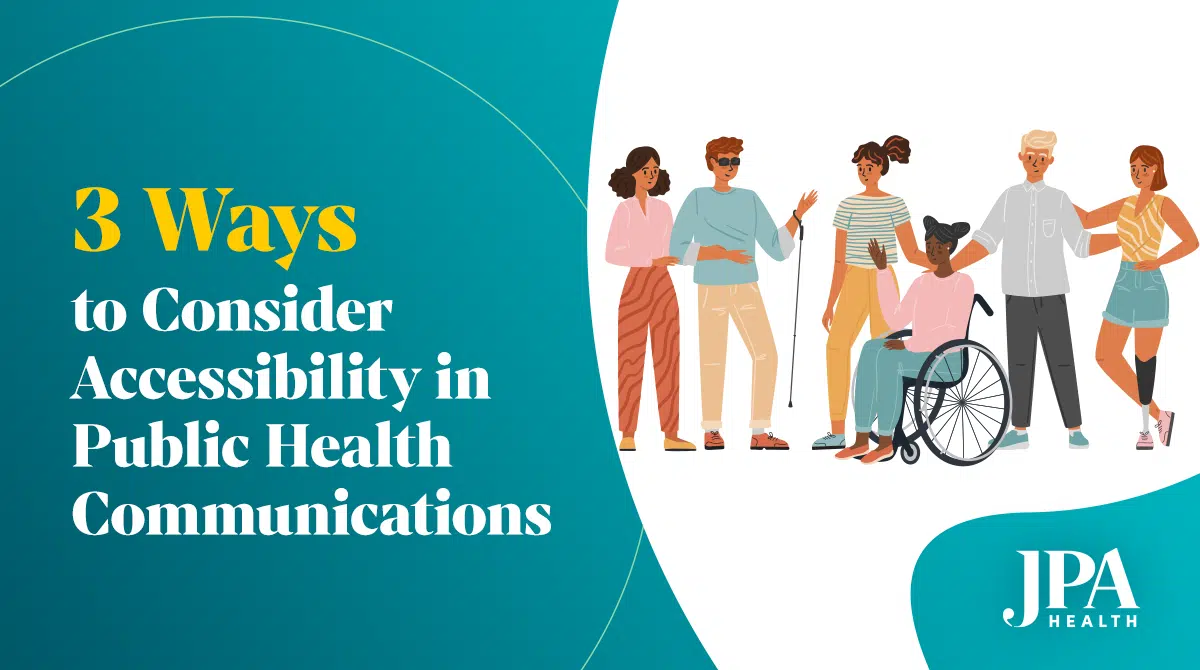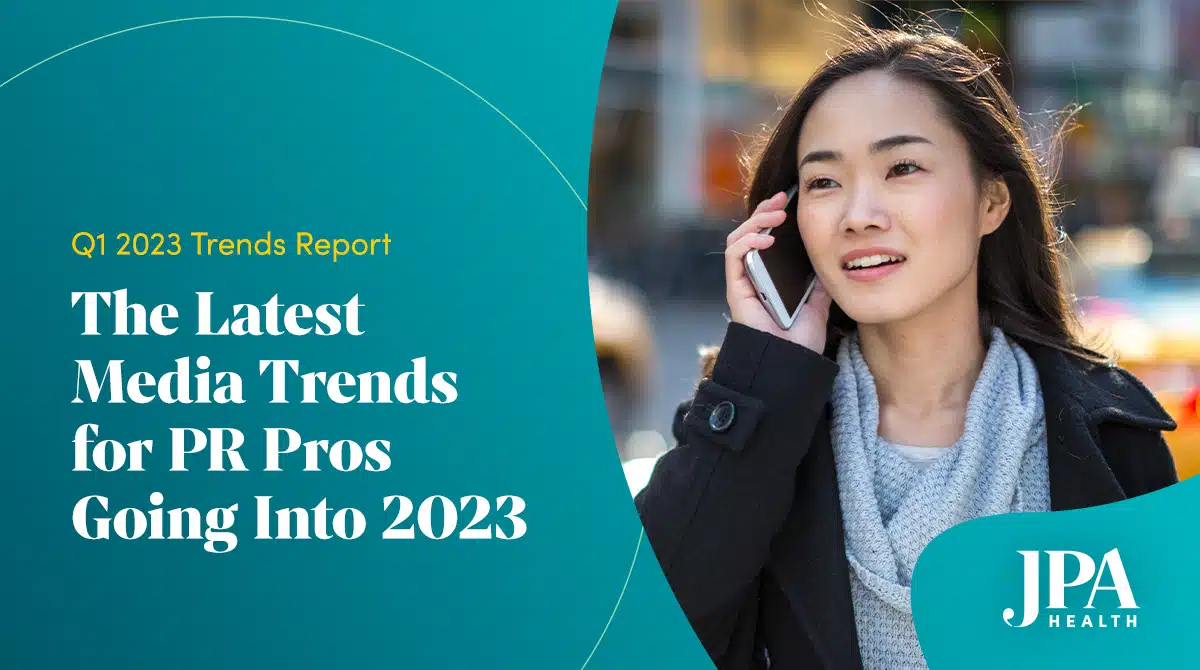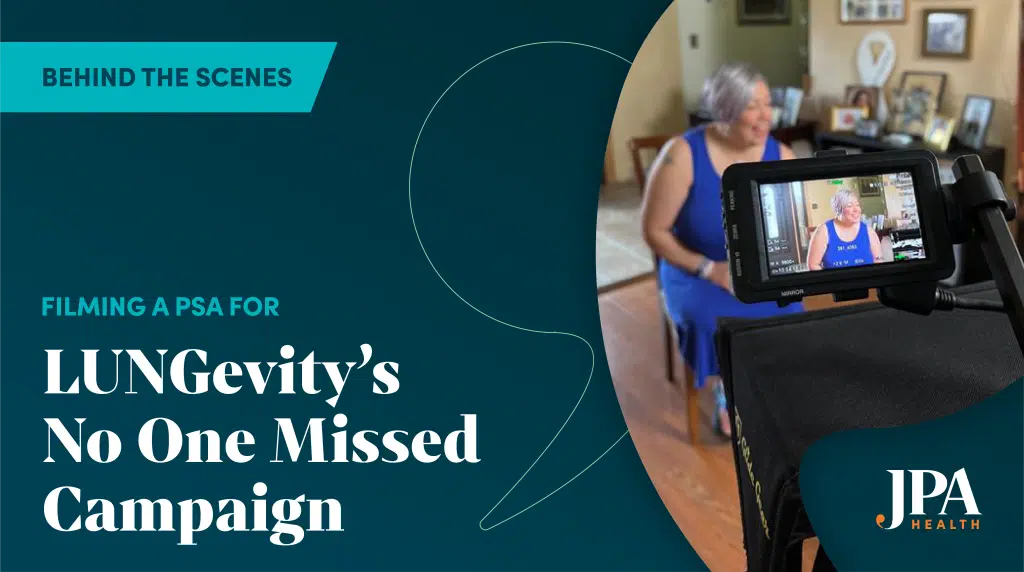
June is LGBTQ+ Pride Month, an annual celebration of inclusivity and acceptance. At JPA Health, we believe it’s the perfect time to highlight a monumental act of progress in healthcare that occurred recently. On May 11, 2023, the U.S. Food and Drug Association (FDA) lifted the discriminatory ban that prohibited gay and bisexual men from donating blood. This policy change is an example of the kind of advances in equity and fairness in healthcare that our agency strives to create and promote every day.
The timing of the FDA’s announcement was fortuitous: It came just in time for World Blood Donor Day, which is held each June 14 to raise awareness of the need for safe blood and blood products. According to the American Red Cross, every two seconds someone in the United States requires a transfusion of blood or blood platelets, which cannot be manufactured and must be obtained through donation. Lifting the ban could lead to a much-needed increase in life-saving blood donations.
Key Takeaway
– FDA lifts discriminatory blood ban
– Ban’s removal boosts blood donations
– New policy promotes health equity

Related Case Studies
The original FDA policy was in place for over 40 years, dating back to 1977, and was first created during the AIDS epidemic with the intention of preventing the HIV virus from being transmitted to and infecting recipients of blood transfusions. At the time, homophobia fueled the harmful, discriminatory belief that gay men were responsible for the HIV epidemic, which has long since been disproven. As science and time progressed, critics charged that the ban was discriminatory and outdated for numerous reasons, notably that blood banks routinely screen for HIV in donor blood. Despite advances in our understanding of HIV, the FDA was slow to change policy. Though the lifetime ban preventing gay and bisexual men from donating blood was lifted in 2015, the FDA implemented a one-year abstinence requirement for potential donors. This requirement was shortened to a three-month period of abstinence in 2020. It was clear that gay and bisexual men were specifically targeted through these revised policies as well as through screenings, deferrals, and, ultimately, being prevented from donating.
The FDA’s refusal to lift the ban was harmful in a number of ways. It was a blatant act of discrimination toward members of the LGBTQIA+ community and worsened the stigma attached to HIV. The ban also affected the overall blood supply and limited access for communities in need. The Red Cross reports that approximately 29,000 units of red blood cells are needed every day in the United States. For perspective, consider that a single car accident victim can require as many as 100 units of blood, but the average red blood cell transfusion is only around 3 units.
With the overturning of the ban, blood banks have already been advised to start changing donor history questionnaires and procedures. The FDA now recommends asking all prospective blood donors a set of “individual risk-based questions,” such as if they have been sexually active with a new sexual partner, had multiple sexual partners, or have had anal sex in the past three months. If the answer to any part of the survey is yes, they will be deferred. These updates now align with the established blood donor policies and practices in Canada and the United Kingdom.
JPA Health is a proud ally to the LGBTQIA+ community, and we strongly believe that these changes benefit public health and drive the broader initiative for health equity. As an agency, we are committed to helping people lead healthier lives, and now with an expanded pool of potential donors and the likelihood of increasing our blood supply, we are excited to see what the future holds.
References:
- The FDA: FDA Finalizes Move to Recommend Individual Risk Assessment to Determine Eligibility for Blood Donations | FDA
- NPR: FDA relaxes blood donation guidelines for gay and bisexual men : NPR
- America’s Blood Centers: U.S. Blood Donation Statistics and Public Messaging Guide – America’s Blood Centers (americasblood.org)
- The LA Times: Opinion: Lifting the stigma against gay men brings new blood donors to the Red Cross – Los Angeles Times (latimes.com)
- American Red Cross: Facts About Blood Supply In The U.S. | Red Cross Blood Services

Access to accurate, understandable health information is an important part of ensuring equitable access and use of public health and healthcare services.
At JPA Health, we always consider this lens of accessibility in how we can make our health tools and resources that everyone needs to make informed decisions available for the communities our clients serve. We challenge ourselves to consider three critical topics in advancing accessibility through public health communications: reaching people where they are, with information they can understand, and in a way that acknowledges people’s cultural context.
Reaching People Where They Are
In public health, we develop a variety of resources and tools to reach our audiences. It is important not to assume that everyone receives their information in the same way. We should also ensure that we are using channels that do not leave people out and consider people’s lived experiences to engage as many people as possible. We should ask ourselves the following:
Key Takeaway
– Health info must be accessible
– Health literacy is high demand

Related Case Studies
- Availability – does the communications activity require a time commitment or restraint (i.e., must be completed by a certain time of day)? Not everyone works similar hours and many people have limited availability.
- For example, if we want to understand working parents’ perspectives on child vaccinations, asking them to travel a long distance to participate in a two-hour focus group may not be accessible.
- Technology – does it require someone to have access to the internet or a particular device?
- For example, many people have access to a mobile phone but not a computer, so it is important to make websites and other digital resources mobile-friendly.
- Geographic Location – does it require someone to travel or live in a particular area?
- For example, if we are trying to reach people living in rural areas where there are food deserts, having advertisements in a grocery store may not be accessible.
Providing Information People Understand
Health literacy means how well an individual can find, understand, and use information and services to inform health-related decisions and actions for themselves and others. Historically, our healthcare system does not provide us with easy-to-understand information. So, as public health communicators, we must consider the following as we develop and publish information:
- Plain Language – Often, public health topics can be hard to understand. For example, announcing the findings of a new clinical research study often includes jargon and technical explanations. Using common language allows more people to benefit from the latest research.
- Reading Levels – According to The Literacy Project, 50% of Americans cannot read a book above a 5th grade reading level, which means any information written for the public should be written at, or below, that level.
- Mental Ability – When disseminating information, think about the level of mental ability required. For example, a timed online survey may not be accessible for someone with a cognitive disability such as ADHD.
Acknowledging People’s Cultural Context
Cultural and linguistic competency, or the ability to communicate effectively and interact with people from different cultures and languages, is essential to ensure that audiences connect with and understand our messaging. Consider the following:
- Language Preferences – If the audiences we seek to engage primarily speak Spanish or Italian, we should ensure that all messaging and materials are available in those languages.
- Core Cultural Values – In some cultures, respect for elders is highly valued, and many young people take care of their elders in multi-generational households. How could we create ways to engage young people to help support the health of the older adults in their lives?
- Existing Cultural, Religious or Other Beliefs – Some cultures have more hesitancy towards western medicine. How can we ensure we recognize naturalistic beliefs in relation to preventative health?
At JPA Health, we strive to approach our work with every client through a lens of accessibility so that every community can receive, understand, and use the information and resources they need to live healthier lives, and we will continue to grow and adapt as we learn more. Check out our Public Health Practice to learn more about our work.

While the health industry continues its transformation toward new technology models and exploring the future of patient care, as PR pros we must also consider what the media trends are that contribute to the rise and fall of these discussions and what they mean for the news cycle. To that end, here are four evolving trends we’ve spotted as we move into 2023 and what they mean for our clients:
Journalists are actually returning to office
During the pandemic, many journalists worked from home, and it was difficult to get in touch with them outside of standard emailing. Office numbers went unanswered and voicemail boxes were too full to leave messages. For the most part, unless someone had a strong relationship with a reporter, many communicators did not have access to personal contact info. However, journalists at several outlets, including the Wall Street Journal, Barron’s, and MarketWatch.com, among others, have been requested to return to their offices if not full time, then in a hybrid capacity.
Key Takeaway
– Journalists returning to offices
– Layoffs impacting media relationships
– Gen Z reshaping journalism trends

Related Case Studies
Some, such as New York Times staff , have been extra vocal in fighting against this policy, though it has not impacted everyone.
What this means: While this will make things a little easier to reach some journalists, timely follow up and being careful about the language we’re using when crafting pitch letters should always remain top of mind.
Layoffs upon layoffs across the board
Similar to the height of 2020, there is a strong decline in the number of reporters in newsrooms as layoffs amass across industries , and those who remain are being assigned to several beats to cover the workload. Vox Media, Dotdash Meredith, Wall Street Journal, Washington Post, Barron’s, AdWeek, CNN, CBS, Gannett/Tenga, and MarketWatch are just some of the newsrooms that have announced massive layoffs in January, along with local outlets across the country.
What this means: Communications professionals will need to manage new relationship development and keep in touch with reporters who are moving around now. We always need to ensure we’re sharing high-value news and viewpoints to breakthrough inbox clutter.
The Gen Z influence
Gen Z is making a play to insert itself into the newsroom dynamic. The issues shaping this generation and capturing their attention primarily revolve around climate change, political polarization, equity among minority groups, and economic uncertainty. They are looking for experts to provide insights and answers to these big-ticket issues and want to be part of finding solutions to share with the public in meaningful ways. They care deeply and are not generally content with traditional “news” items (even if it’s an assigned piece) that have driven industry coverage the last 20+ years. Gen Z consumers turn to social media sites for news significantly more than millennials and above, and they’re looking for it in non-traditional media spaces such as on TikTok and Snapchat.
What this means: We need to bring our clients out-of-the-box thinking and trend ideas on ways to reach Gen Z reporters and audiences. We must deliver informed counsel about the changing landscape of journalism including who is doing it and what exactly they are looking to write about.
Robots in the newsroom? What!?
Some outlets, such as CNET and BuzzFeed , have used and are using AI robots to write articles and content. Since November 2022, CNET has used AI to write 77 articles. However, after some vocal skepticism and some identified factual errors, ultimately, CNET has paused using the AI tool for the time being.
What this means: We don’t know but are going to continue monitoring. AI authors remove the opportunity for crucial human interaction with reporters and may limit our access and idea-sharing.
From a health standpoint, we still do not know the extent that an AI tool would be able to break down complex scientific and medical information, which may leave most of our health trades and outlets with human staff for now.
As always, we must provide thoughtful counsel to our clients about how to operate within a changing media landscape while also being respectful of the journalists with whom we work.

This year the JPA Health team had the opportunity to plan, produce, film, edit and distribute a national public service announcement (PSA) that aims to educate people about the importance of comprehensive biomarker testing during a non-small cell lung cancer (NSCLC) diagnosis and subsequent treatment in support of LUNGevity Foundation. The PSA launched in November as a part of LUNGevity’s No One Missed campaign and tells the story of two people directly impacted by non-small cell lung cancer and comprehensive biomarker testing. This blog posts shares multimedia manager Michael Zhao’s experience meeting and filming their stories.
Key Takeaway
– Personal connections resonate
– Biomarker testing key in lung cancer
– Advocacy through personal storytelling

Related Case Studies
Getting to Know Your Talent
When you sit down with the talent behind your camera for a meal, you really get to know each other. You start talking about the “little” things in life—that’s when you know you are making friends. This is what we did this past summer while we were out on video shoots featuring Juanita and Jaymie—two people living with lung cancer.
Juanita from Indiana, and Jaymie from Georgia, are the stars in a PSA series highlighting their experience living with non-small cell lung cancer and with receiving comprehensive biomarker testing. Comprehensive biomarker testing can help identify mutations in a patient’s unique lung cancer and may help determine an appropriate treatment for that patient, including targeted therapies.
I was pumped to be a part of the JPA team supporting LUNGevity, working tirelessly for a few months to ensure that millions of homes in the U.S. have access to this essential information.
Meet Juanita Segura
Juanita Segura was diagnosed in November of 2014 and has been living with NSCLC for eight years.
Juanita got emotional on camera remembering the formidable challenge of how to best tell her children about her diagnosis. “[I wanted] to give them hope that Mom is going to be around to see them grow up—I promised them that.” I was sitting behind the cameras and crew, watching Juanita tear up as she spoke about the difficulties of her lung cancer diagnosis. I couldn’t help but relate to her as a parent. She is not a smoker, and neither am I, but her message is important: if you have lungs, you are at risk of getting lung cancer. I could not imagine how I would feel if I had to break that kind of news to my children, with looming terror that I might not see them grow up.
Juanita and her husband Steve were both shocked and devastated about Juanita’s diagnosis. Lung cancer brought a lot of anxiety and fear into their family. But her treatment journey wasn’t a straight line. When Steve found out about comprehensive biomarker testing through online research, they knew it would be a major step for Juanita’s treatment. Comprehensive biomarker testing found Juanita’s cancer tested positive for the ALK mutation, which can be treated with a targeted therapy.
Juanita says receiving this testing and finding the right treatment for her unique cancer has helped put her life back on track. Now with a dog and a couple of cats in the house, their home is as busy as ever. The cutest of all is their granddaughter, who is an absolute charm in front of cameras. Better yet, they are expecting another grandchild.
Meet Jaymie Bowles
The other star of the PSA is Jaymie Bowles, who was diagnosed with NSCLC in 2018. She was fearful about how uprooted her life might become after the diagnosis. As Jaymie sat with the news, she began to slowly open up to family and friends about her experience. She recognizes the profound impact that cancer treatment has on her life.
Unlike Juanita, Jaymie’s oncologist performed biomarker testing immediately after she was diagnosed, which found her cancer tested positive for the ALK mutation and can be treated with a targeted therapy. Now, Jaymie has been living with lung cancer for four years, she and her husband Frank, who is in the military, reside in Savannah, Georgia with their cat and dog. In her free time Jaymie loves to be with her family, play pool and participate in group fitness classes.
Advocating for Biomarker Testing
Jaymie and Juanita both took on new roles as advocates for comprehensive biomarker testing. They know that not everyone who is diagnosed with NSCLC knows about biomarker testing and want to emphasize it as a pivotal moment in their treatment journeys.
“Without biomarker testing, I wouldn’t be here talking to you today,” Juanita emphasizes. Juanita has been to Washington, D.C., to help organizations lobby for funding for lung cancer and takes every opportunity to educate newly diagnosed lung cancer patients about the importance of comprehensive biomarker testing. Jaymie is also a vocal advocate for the lung cancer community, often participating in live walks and events.
Now, Jaymie and Juanita are the stars of our PSA—and their stories have the potential to help millions of other people diagnosed with lung cancer. Thanks to comprehensive biomarker testing, NSCLC patients are being matched to the most appropriate treatment for their type of lung cancer. And thanks to Juanita and Jaymie, other people living with lung cancer will know about this important testing and the impact it can have on treatment decisions.
WASHINGTON, D.C., November 1, 2021 – JPA Health, a full-service, independent marketing and communications agency, has been selected by Modern Healthcare and its judges as an award winner for the 2021 Healthcare Marketing Impact Awards. JPA Health was selected as the Agency of the Year for its outstanding marketing campaign efforts across the life sciences and public health sectors. The complete list of this year’s winners is available at ModernHealthcare.com/ImpactWinners. Modern Healthcare announced the ranking and list of winners in its publication on November 1.
“COVID-19 remained a top target for marketers in 2021 as the delta variant drove new surges across the country, and vaccine and mask mandates divided communities. Advertising and social media campaigns crafted to inform, educate and build trust are among the winners in this year’s Healthcare Marketing Impact Awards.
Key Takeaway
– JPA Health wins Agency of the Year
– Recognized for impactful campaigns
– Highlights innovative marketing excellence

Related Case Studies
Others continued to honor the daily sacrifices of front-line caregivers as the pandemic marches relentlessly toward its third year,” said Aurora Aguilar, editor of Modern Healthcare. “While COVID-19 dominated headlines, other life-threatening diseases and chronic illnesses also received plenty of attention from marketers, including cancer, COPD and neurological conditions, with emphasis on advanced screenings and the latest treatments. Congratulations to all of the winners of the 2021 Healthcare Marketing Impact Awards.”
“JPA Health is honored to be recognized as Modern Healthcare’s Agency of the Year for our strategic and creative work,” said Carrie Jones, Principal at JPA Health. “Designing marketing campaigns which engage patients and providers is always nuanced. No surprise it has been particularly challenging during the pandemic. We’re so appreciative to our client and our incredible team who have been unwavering in their commitment to make a meaningful difference.”
This award program identifies and recognizes outstanding healthcare marketing campaigns that are impacting the industry, addressing the ever-changing challenges in healthcare and are reinventing the way audiences receive and retain healthcare information.
About JPA Health
JPA Health is an award-winning independent, full-service agency established in 2007. With offices in the U.S. and UK, the agency provides marketing, public relations and advocacy services. JPA Health recently was awarded MM&M Midsize Healthcare Agency of the Year, 2021. The firm is a leader in the health sector for its award-winning work designing health campaigns that drive change and deliver measurable results. The JPA Health team is passionate about helping people live healthier lives. To learn more, visit www.jpa.com.
For more information or questions on the Healthcare Marketing Impact Awards program, please contact:
Jodi Sniegocki Kerhulas
Education and Events Director
jsniegocki@modernhealthcare.com
312.649.5459
For more information about JPA Health, please contact:
Stefanie Tuck
stefanie@jpa.com
202.470.1797
